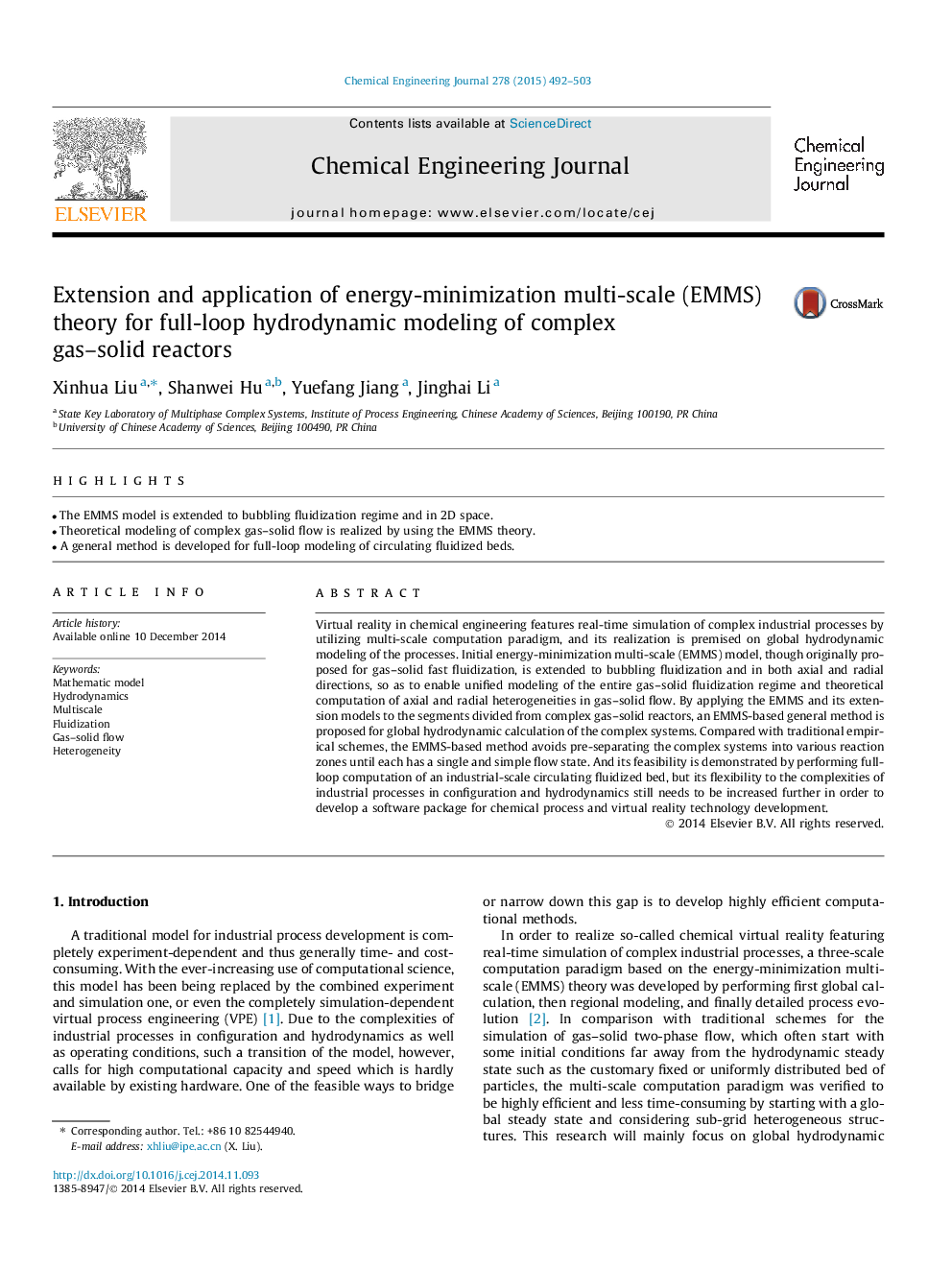| Article ID | Journal | Published Year | Pages | File Type |
|---|---|---|---|---|
| 146201 | Chemical Engineering Journal | 2015 | 12 Pages |
•The EMMS model is extended to bubbling fluidization regime and in 2D space.•Theoretical modeling of complex gas–solid flow is realized by using the EMMS theory.•A general method is developed for full-loop modeling of circulating fluidized beds.
Virtual reality in chemical engineering features real-time simulation of complex industrial processes by utilizing multi-scale computation paradigm, and its realization is premised on global hydrodynamic modeling of the processes. Initial energy-minimization multi-scale (EMMS) model, though originally proposed for gas–solid fast fluidization, is extended to bubbling fluidization and in both axial and radial directions, so as to enable unified modeling of the entire gas–solid fluidization regime and theoretical computation of axial and radial heterogeneities in gas–solid flow. By applying the EMMS and its extension models to the segments divided from complex gas–solid reactors, an EMMS-based general method is proposed for global hydrodynamic calculation of the complex systems. Compared with traditional empirical schemes, the EMMS-based method avoids pre-separating the complex systems into various reaction zones until each has a single and simple flow state. And its feasibility is demonstrated by performing full-loop computation of an industrial-scale circulating fluidized bed, but its flexibility to the complexities of industrial processes in configuration and hydrodynamics still needs to be increased further in order to develop a software package for chemical process and virtual reality technology development.
